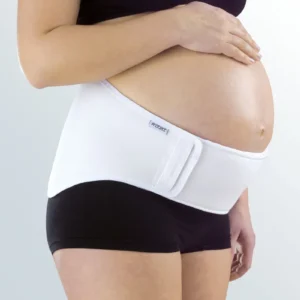Iliotibial band syndrome
Iliotibial band syndrome is a common type of injury caused by damage to the iliotibial band, which is located on the outside of the upper leg (thigh) and extends from the hip to below the knee, and which is responsible for hip extension, abduction and rotation movements and is involved in the stability and movement of the outside of the knee. It develops due to overuse, such as in exercises that involve flexion and extension movements of the knee, like running, cycling or squats, or anatomical factors.
Most common knee pathologies
Symptoms
Pain, stinging and irritation on the outside of the thigh, just above the knee, with a feeling of weakness or instability in the affected knee; Intense pain during physical activities that involve bending and stretching the knee, especially if it is repetitive.
Risk Factors
Exercise and sports that involve repeated knee movements such as running and cycling and squats; a sudden increase in the intensity or duration of training; going up and down stairs or sitting for long periods with bent knees; biomechanical misalignment, such as poor posture, or muscle weakness in the hip and leg; anatomical factors, such as bowed legs or differences in leg length, anatomically "tight" iliotibial band, asymmetry of leg length, flat feet, bowed legs; arthritis of the knee; use of inappropriate or worn-out footwear; previous history of iliotibial band syndrome.
Protective Factors
Warming up and stretching properly before physical activity; Gradually increasing the intensity and duration of exercise; Proper sports footwear and posture; Strengthening thigh, leg and hip muscles, especially knee stabiliser muscles; Good general physical condition which includes maintaining a healthy weight; Avoiding intense workouts and repetitive exercises, taking regular breaks during prolonged activities.
Treatment
Rest - avoid physical activity that causes symptoms such as running, cycling or other activity that promotes movement of the thigh and knee for some time until the pain and irritation disappear; Use of support devices/orthotics to relieve pressure on the iliotibial band; Apply ice to the outside of the knee to better control the pain; Use of analgesic pain medication if the pain is exceptionally severe; Stretching and strengthening exercises for the hip, thigh and leg muscles, especially the abductor muscles; Physiotherapy to reduce the risk of recurrence, especially if you are going to continue playing the sport in question in the long term.
Information: All the information contained here is merely a summary for a general understanding of the pathologies, highlighting their definition, symptoms, risk factors, protective measures and treatment options.
Consulting a specialised health professional is essential for an accurate diagnosis and an effective treatment plan.
Support and protection for Iliotibial Band Syndrome
Discover all the orthotics for Iliotibial Band Syndrome
-
Seleccione Opções This product has multiple variants. The options may be chosen on the product page
-
Seleccione Opções This product has multiple variants. The options may be chosen on the product page
-
Seleccione Opções This product has multiple variants. The options may be chosen on the product page
-
Seleccione Opções This product has multiple variants. The options may be chosen on the product page
-
Seleccione Opções This product has multiple variants. The options may be chosen on the product page
-
Seleccione Opções This product has multiple variants. The options may be chosen on the product page
-
Seleccione Opções This product has multiple variants. The options may be chosen on the product page
-
Seleccione Opções This product has multiple variants. The options may be chosen on the product page
-
Seleccione Opções This product has multiple variants. The options may be chosen on the product page
-
Seleccione Opções This product has multiple variants. The options may be chosen on the product page
Protect.Co Knee Brace with Flexion and Extension Adjustment
258,00 €Avaliado 0 out of 5( 0 comentários ) -
Seleccione Opções This product has multiple variants. The options may be chosen on the product page













